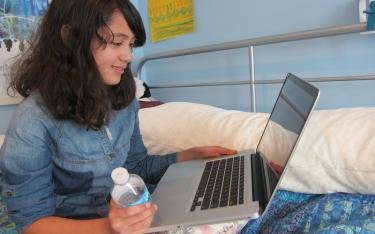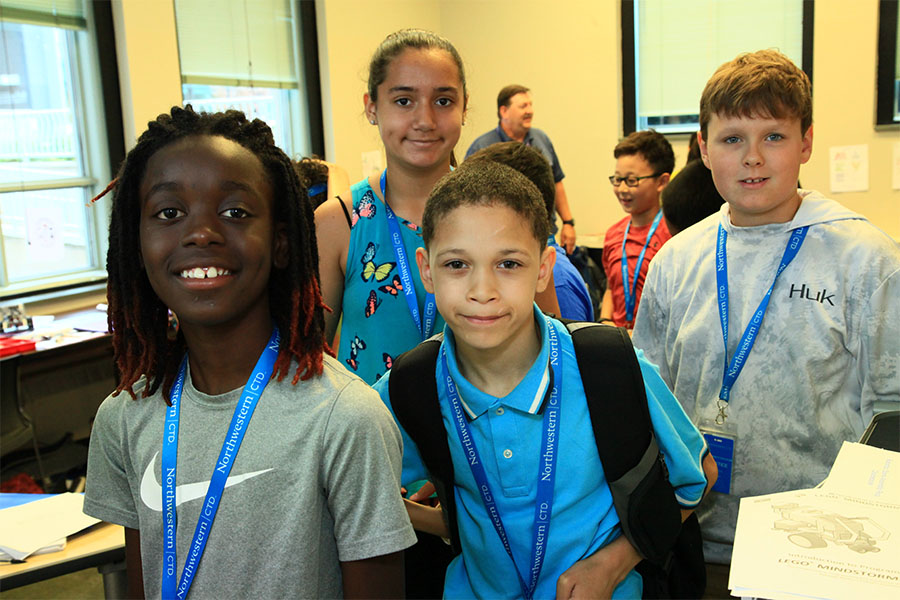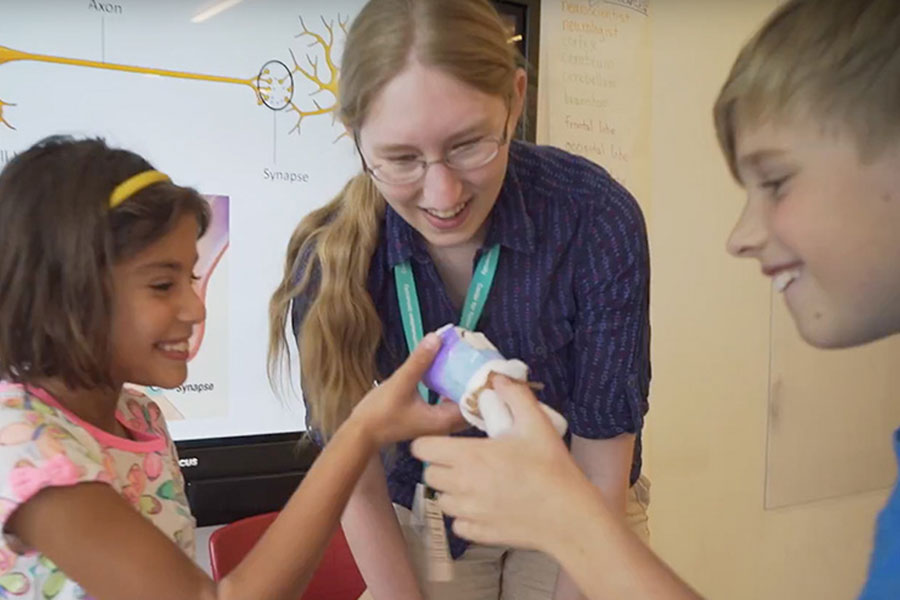From Letter-Links to CTD Online
How has remote learning evolved over the decades at CTD?
By Ed Finkel
Remote learning at CTD started in the 1980s with traditional postal-mail correspondence courses before shifting to the then-new communication format called electronic mail; and then later became a synchronous online experience, first mimicking the feel of a bricks-and-mortar classroom before exploring and capitalizing on the different dynamics of the digital format.
Along the way, the breadth and types of courses evolved, as did the ability to engage younger and younger children and provide a robust, multidimensional learning environment.
The first course in 1982 via the Letter-Links correspondence course was Latin; among other offerings in the mid-1980s were computer courses in languages like Pascal, along with Literary Analysis, Writing for Publication, and Precalculus. “This fast-paced precalculus mathematics ‘packaged’ course consists of accelerated versions of Pre-algebra, Algebra 1 and Algebra 2,” says the course overview. “You will be covering all the essential topics in a fraction of the time.”
By 1991-92, the program, still conducted via postal mail, was offering an array of mathematics and humanities courses for students in grades 7 to 10, including Creative Writing, Mathematics and Computers, and Advanced Studies in Writing Non-Fiction with the purpose of developing students’ self-awareness, confidence in mastering difficult material, and capacity for autonomous and self-directed learning.
 By 1996-97, CTD was providing courses in two formats: traditional correspondence courses in mathematics, humanities, and social sciences for students grades 6 through 12; and new “multimedia” math courses for kindergarten through grade 12, in partnership with Stanford University’s Education Program for Gifted Youth (EPGY). These new computer-based courses provided audio lectures where the “computer screen is used as a chalkboard and students can follow instruction at their own pace,” though instructors and students mainly communicated via phone or email.
By 1996-97, CTD was providing courses in two formats: traditional correspondence courses in mathematics, humanities, and social sciences for students grades 6 through 12; and new “multimedia” math courses for kindergarten through grade 12, in partnership with Stanford University’s Education Program for Gifted Youth (EPGY). These new computer-based courses provided audio lectures where the “computer screen is used as a chalkboard and students can follow instruction at their own pace,” though instructors and students mainly communicated via phone or email.
A decade later, the newly rebranded Gifted LearningLinks program had shifted to online tools more similar to what we know today and provided “an exciting variety of courses designed to intrigue, challenge and delight academically talented students in grades K-12, whether they live in Kazakhstan or Kalamazoo, attend an urban school, a home school, or one in rural Montana,” as Paula Olszewski-Kubilius, then and now director of CTD, wrote in her welcome letter for 2006-07.
By then, enrichment courses for grades 4-6 included offerings in Adventure, Science Fiction and Fantasy literature; a nonfiction writing series spanning Research Writing, Build a Better Blog and Persuasive Essay; a three-part Spanish sequence in addition to the legacy Latin series; and an Ancient World sequence covering the “wonders” of China, India and Australia.
Today, the CTD online roster includes the Family Program for preschool through fifth grade, Core Essential and Enrichment classes for grades three to eight, Honors courses for grades six to 12, and Advanced Placement courses for high schoolers. “Remote learning isn’t new to us,” the program’s website says. “It’s been part of CTD’s programming for almost 40 years, starting with correspondence by mail courses … You can’t always get to the class. But the class can come to you. Our online courses help students find their path from anywhere in the world.”
The team currently in charge of running these programs for more than 7,000 students around the globe includes Eric Calvert, associate director of CTD, who’s been with the center for more than a decade. He says the distance learning program was rooted in the notion that many students’ schools didn’t have the capacity—either financially or in terms of teacher background—to meet the needs of academically talented students. That orientation continues to the present day.
The correspondence courses that began through the postal service and later through e-mail—“it seemed like a natural fit for that model, to just cut out the postage stamp,” Calvert says—were out of necessity both asynchronous and based on one-to-one relationships between student and instructor, with no opportunity for peer-to-peer interaction.
Early online learning management systems that began to surface in the mid- to late-1990s, based heavily on a brick-and-mortar classroom, offered a familiarity that helped both students and teachers make the transition, Calvert says. But they did so “without really deeply questioning whether the schedules, the routines and the structures that evolved in brick-and-mortar classrooms from the time of Socrates to today make sense in a fully online environment,” he says. “In many cases, they were a forced fit.”
As the 21st century dawned, CTD and other online learning providers began “a million different experiments” in “very much a DIY culture” to explore the right balance between a familiar structure and interface, while also “not letting ourselves be constrained by just thinking about, ‘Well, we would do it this way in a classroom with four walls that was constrained in space,’ ” Calvert says.
The current online platform has enabled students to interact with peers from Elgin, Illinois, to New Jersey, to Saudi Arabia, to China to gain a wide variety of cultural perspectives, while also enabling differentiated instruction more easily student by student. “It’s really more modeled after social media tools that students have grown up with and feel very natural for them as a way to interact,” Calvert says.
The evolution toward more synchronous online learning also has opened the opportunity to reach younger students who may lack the time-management skills, self-motivation, and patience to wait for feedback that high schoolers typically possess. As a result, Gifted LearningLinks courses have been offered to those as young as third grade, he says.
And for students as young as preschool, CTD began offering interactive parent-child courses aimed to ensure that younger children absorbed “cognitively rich” material and did not simply become sucked into passive screen time, inspired by research focused on how children watched and learned from the PBS program “Sesame Street.
“What they found was that, for very young children, there actually wasn’t that much benefit when they watched alone,” Calvert says. “But when if they watched with a sibling or with an adult and could talk about it when it was happening, then it had a tremendous benefit.”
For older children, the online format has provided a great opportunity for peer-to-peer collaboration that goes far beyond the one-to-one interactions of the late 20th century correspondence courses. That’s led to rich conversations between people of very different backgrounds who might not always agree but do come to see one another as three-dimensional people rather than caricatures, Calvert says.
“We find that when students are passionate about the same topic, that the content itself is often enough to be the bridge across those differences and make students interested and willing to make connection with others who are different from them around that content,” he says. Today the connections are just as important as being able to access advanced content, master difficult material, and become a self-directed learner.

